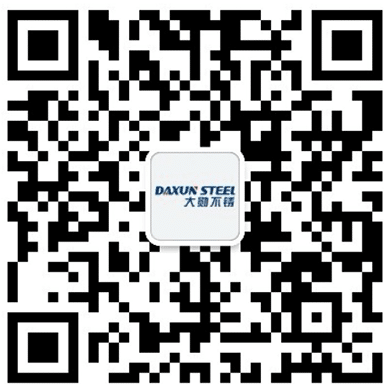Cold rolling technology originated in Germany in the mid-19th century and was initially used to produce cold-rolled strip steel with a width of 20 – 25 mm. So, what is cold rolled steel? The following will introduce cold rolled steel in detail from aspects such as its definition, production process, performance characteristics, and application fields:
Definition
Cold rolled steel refers to the steel material that is further rolled to the target thickness from No.1 steel plate through a cold working process carried out at a temperature close to room temperature. Cold rolling is a rolling process conducted below the recrystallization temperature of steel, and the final rolling temperature is lower than the recrystallization temperature of the steel.
Production Process
Basic Procedures
Cold rolling usually adopts longitudinal rolling, and its production procedures generally include raw material preparation, pickling, rolling, degreasing, annealing (heat treatment), and finishing.
Raw Material Preparation: Cold rolling uses hot-rolled products as raw materials. Before cold rolling, the raw materials need to be dephosphorized to ensure the surface cleanliness of the cold rolled steel products.
Pickling: A continuous pickling unit is used to remove the surface iron oxide scale from the hot-rolled coil. In the past, sulfuric acid was used as the pickling solution, but now hydrochloric acid is more commonly used. Before pickling, the coils are first welded and coiled, and some are also subjected to continuous “black annealing”. After pickling, the coils are cleaned, dried, and trimmed and coiled.
Rolling: The metal plate is subjected to pressure by the rollers of the rolling mill, causing plastic deformation, thereby changing its shape and size. By adjusting parameters such as the roll gap, rotational speed, and rolling temperature of the rolling mill, the degree of deformation and properties of the metal plate can be controlled. At the same time, lubrication treatment is also required during the rolling process to reduce the friction between the metal and the rollers and improve the rolling quality.
Degreasing: The purpose is to remove the lubricating grease attached to the rolled material during rolling to prevent contamination of the steel surface during annealing. For stainless steel, it also helps prevent carburization.
Annealing: This includes intermediate annealing and finish heat treatment. Intermediate annealing eliminates the work hardening generated during cold deformation through recrystallization, restoring the plasticity of the material and reducing the deformation resistance of the metal. In addition to eliminating hardening through recrystallization, the purpose of finish heat treatment is to obtain the required structure (such as various textures) and product properties (such as deep drawing and electromagnetic properties) according to the technical requirements of the product.
Finishing: This includes inspection, shearing, straightening (flattening), printing, classification, and packaging. Cold rolled steel products have high packaging requirements to prevent surface scratches during transportation.
Types of Rolling Mills
The rolling mills used for cold-rolling strip steel include two-high rolling mills, four-high rolling mills, and multi-roll rolling mills. The four-high rolling mill is the most widely used. For rolling thinner products, multi-roll rolling mills such as six-high rolling mills, Sendzimir rolling mills, twelve-high rolling mills, and twenty-high rolling mills are required. Cold-rolling strip steel mills can be divided into two categories according to the arrangement of the stands: single-stand reversible or non-reversible mills and multi-stand continuous mills. The former is suitable for situations with a wide variety of products, small batch sizes, or a high proportion of alloy steel products. It has low investment and fast construction, but low output and high metal consumption. Multi-stand continuous rolling is suitable for situations with a relatively single product variety or little variation. It has the advantages of high production efficiency and large output, but requires a larger investment.
Performance Characteristics
Advantages
Good Surface Quality: Due to multiple cold working processes, the surface of cold rolled steel is smoother and flatter than that of hot-rolled steel. It has no sub-surface oxides, oil stains, or impurities. The surface roughness is low, and the appearance is aesthetically pleasing.
High Dimensional Accuracy: The dimensional accuracy of cold rolled steel plates or coils is higher than that of hot-rolled steel. The deviations in length, width, and thickness of the products are small, meeting the requirements of many industrial applications with strict dimensional requirements.
Superior Mechanical Properties: It has high strength and hardness, excellent ductility and toughness, as well as good wear resistance and corrosion resistance. It also has good processing performance, especially punching performance, and can be directly used for processing finished products.
Stable Surface Quality: During the production process, due to the low temperature and small deformation, surface defects generated during the hot working of hot-rolled steel are avoided, resulting in stable surface quality.
Disadvantages
High Hardness and Difficult Processing: Since it has not undergone annealing treatment, cold rolled steel has high hardness (HRB greater than 90) and extremely poor machinability. It can only undergo simple directional bending with an angle of less than 90 degrees (perpendicular to the coiling direction). If not annealed, its punching performance will deteriorate, and it can only be used for parts with simple deformation.
High Cost: Cold rolled steel requires rolling mills with high power, has low rolling efficiency, and intermediate annealing is required during the rolling process to eliminate work hardening. Therefore, the cost is relatively high.
Application Fields
Cold rolled steel has a wide range of applications in various fields due to its many excellent properties:
Construction Industry: It is used to manufacture steel structures, bridges, steel components, building curtain walls, door and window frames, etc., relying on its beautiful surface, good dimensional stability, and high strength.
Machinery Manufacturing Industry: It is used to produce various mechanical parts, bearings, gears, etc., meeting the requirements for material precision and performance.
Automotive Industry: It is used to make numerous parts such as car exteriors, doors, car chassis, and engine blocks, thanks to its high strength, good formability, and corrosion resistance.
Electronics and Electrical Industry: It is used to produce various electrical enclosures, terminal boards, instrument panels, etc., taking advantage of its smooth surface and precise dimensions.
Other Fields: Such as the production of furniture, handicrafts, food cans, as well as in automotive manufacturing, electrical products, locomotives, aviation, precision instruments, etc.

